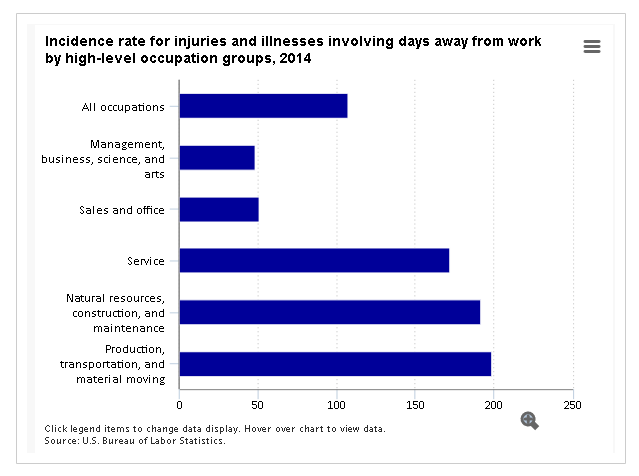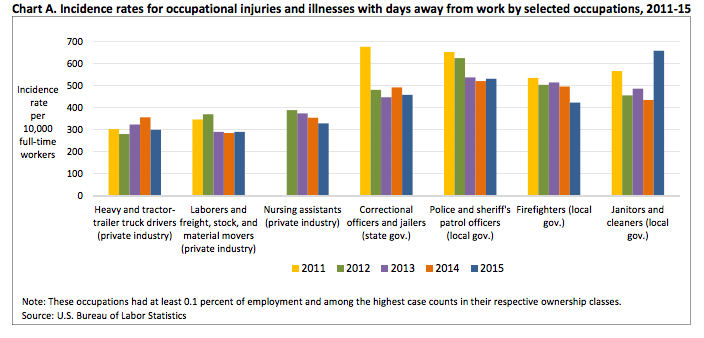The economic loss due to workplace injuries are a drag on your business and on the U.S. economy, not to mention the injured worker and the family he or she supports.
According to a November 2016 news release issued by the U.S. Bureau of Labor Statistics (BLS), during the 2015 calendar year there were 104.0 nonfatal workplace injuries or illnesses per 10,000 full-time workers, across all industries. The median number of “days away from work to recuperate” was 8 days in 2015.
Workers, management and owners all benefit from efforts to reduce the number of injuries that occur in the workplace. Video security can help.
For example, in March 2015, the average cost of workers compensation coverage for private industry workers in natural resources, construction and maintenance (NRCM group) was $1.02 per hour vs. $0.45 per hour for all occupations across all occupational sectors (data from U.S. Bureau of Labor Statistics report, available here). This translates to somewhere between 3 and 4.5 % of total compensation costs in the NRCM group. (same report, p. 9), not to mention the loss of productivity and long-term effects of injury on each worker’s health and ability to earn a living.
Although no workplace will ever be 100% free from any type of injuries, good management and safety practices can help to reduce incidents of injury.
Vulcan Security Systems is pleased to announce a new blog series that takes a look at how video surveillance systems can supplement safety training, safe workplace best practices, and similar management practices applicable to manufacturing and other industrial settings, like construction and natural resources. Over the next few weeks, we’ll be publishing several blog posts on this and related topics.
Injury Rates in Manufacturing, Transportation, Construction, and Natural Resource Industries
As this graph from the BLS shows, the two industry categories with the highest rates of injury are manufacturing, transportation, construction, and natural resources. (2014 data). The full BLS report entitled Workplace Injuries And Illnesses And Employer Costs For Workers’ Compensation available here.

According to a 2016 BLS report based on 2015 OSHA data, the industries reporting the highest number of workplace injuries in 2015 included truck drivers (heavy and tractor-trailer) and workers who handled and moved freight (laborers, stock and material movers).

Video Security Cameras Can Help
Video security cameras can be a key tool in helping to identify causes of workplace injuries. After an injury, the footage can be reviewed help to improve operational processes that may help to reduce future injuries, to identify areas (if any) where safety training needs to be enhanced, and to identify potential equipment malfunctions and maintenance issues that might have contributed to the incident.
Footage captured by security cameras can also be used to verify injury reports and provide evidence in situations where a claim of injury does not seem consistent with the obvious facts.
Cameras can also be installed specifically to monitor equipment usage and document safety practices for insurance and OSHA compliance.
When installing security cameras in the workplace, it’s important to comply with your state’s privacy laws and all DOL guidelines regarding monitoring work areas. We’ll take a look a big-picture at these requirements in the upcoming series.
You also might be interested in this early post we published on privacy issues in Alabama.
